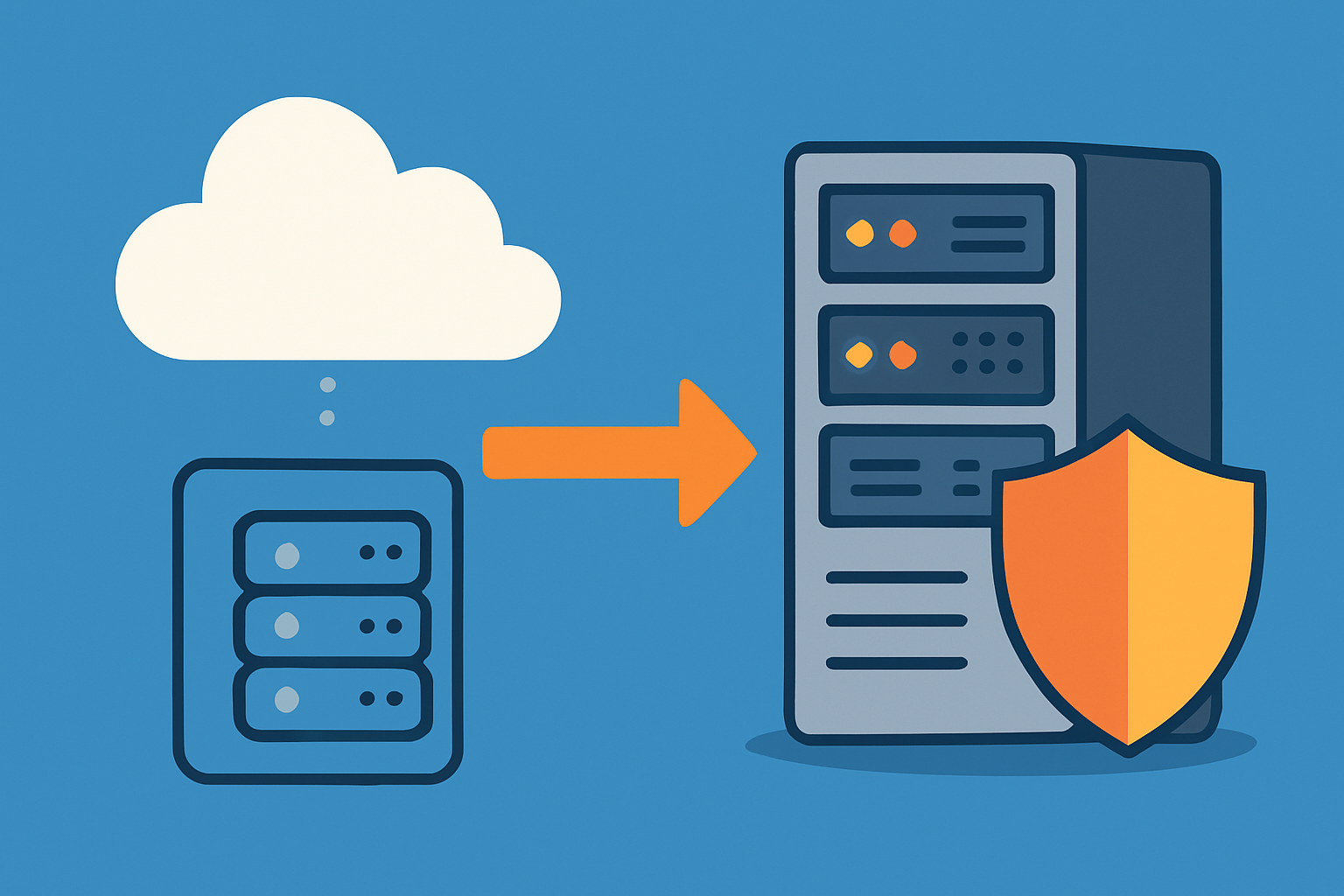Cloud computing has revolutionised how businesses deploy applications and services, offering scalability, flexibility, and reduced initial investment. However, many organisations are now considering a strategic shift back to dedicated servers for specific workloads. This article explores the scenarios that might justify such a migration and provides guidance on planning a successful transition.
When to Consider Migrating from Cloud to Dedicated Servers
1. Predictable, High Volume Workloads
While cloud platforms excel at handling variable workloads, dedicated servers often provide better value for consistent, high volume usage:
- Cost Efficiency: For workloads running 24/7 with predictable resource requirements, dedicated servers can offer savings of 30,50% compared to equivalent cloud resources
- Performance Consistency: Eliminate noisy neighbour issues and performance variability commonly experienced in shared cloud environments
2. Data Intensive Applications
Applications that process, transfer, or store large volumes of data may benefit from dedicated infrastructure:
- Reduced Data Transfer Costs: Cloud providers typically charge for outbound data transfer, which can become expensive for data heavy applications
- Storage Performance: Direct access to NVMe or SSD storage without virtualisation overhead can provide higher IOPS and lower latency
3. Compliance and Regulatory Requirements
Some industries and regions have specific requirements that may be easier to meet with dedicated infrastructure:
- Data Sovereignty: Physical control over exactly where your data resides
- Compliance Certifications: Simplified compliance for regulations requiring specific hardware controls or dedicated resources
- Custom Security Implementations: Greater flexibility for implementing specialised security measures
4. Specialised Hardware Requirements
Applications requiring specific hardware configurations often find dedicated servers more suitable:
- GPU Intensive Workloads: Machine learning, rendering, or specialised processing
- Custom Hardware: Need for specific CPU architectures, RAID configurations, or hardware accelerators
Planning Your Migration Strategy
Assessment Phase
Before migrating, conduct a thorough assessment of your current cloud deployment:
- Workload Analysis: Document current resource utilisation patterns and performance requirements
- Dependencies Mapping: Identify all service dependencies and integration points
- TCO Calculation: Compare the total cost of ownership between cloud and dedicated options over a 3,5 year period
Architecture Planning
Design your target dedicated server infrastructure:
- Scalability Considerations: How will you handle growth without cloud elasticity?
- Redundancy Planning: Implement appropriate redundancy at hardware, network, and geographical levels
- Connectivity Design: Ensure sufficient bandwidth and network performance
Migration Execution
Implement the migration with minimal disruption:
- Phased Approach: Migrate one component or service at a time where possible
- Data Migration Strategy: Plan for efficient data transfer, particularly for large datasets
- Backup and Rollback Procedures: Ensure you can revert if unexpected issues occur
Post Migration Optimisation
After migration, focus on optimising your new environment:
- Performance Tuning: Optimise operating system and application settings for dedicated hardware
- Monitoring Implementation: Set up comprehensive monitoring systems
- Automation: Implement infrastructure as code and deployment automation where possible
Hybrid Approaches, The Best of Both Worlds
Many organisations find that a hybrid approach provides optimal results:
- Core Applications on Dedicated: Run consistent, performance sensitive workloads on dedicated servers
- Burst Capacity in Cloud: Use cloud resources for handling traffic spikes or seasonal demand
- Development/Testing in Cloud: Maintain flexibility for development and testing environments
The cloud versus dedicated server decision is not binary, it is about finding the right infrastructure for each specific workload. Many businesses are discovering that a strategic reverse migration for certain applications can provide significant benefits in performance, cost efficiency, and control.
At CloudSpace, we specialise in helping businesses design and implement optimal infrastructure strategies, whether they involve cloud resources, dedicated servers, or hybrid approaches. Our migration experts can guide you through every stage of the process, from initial assessment to post migration optimisation.
